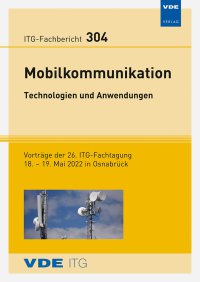Reconfigurable Intelligent Surfaces: About Applications and Their Implementation
Konferenz: Mobilkommunikation - 26. ITG-Fachtagung
18.05.2022 - 19.05.2022 in Osnabrück
Tagungsband: ITG-Fb. 304: Mobilkommunikation – Technologien und Anwendungen
Seiten: 7Sprache: EnglischTyp: PDF
Autoren:
Herbst, Jan; Rueb, Matthias; Reddy, Rekha; Munoz, Yorman; Melnyk, Sergiy; Lipps, Christoph (Intelligent Networks Research Group, German Research Center for Artificial Intelligence, Kaiserslautern, Germany)
Schotten, Hans Dieter (Intelligent Networks Research Group, German Research Center for Artificial Intelligence, Kaiserslautern & Institute for Wireless Communication and Navigation, University of Kaiserslautern, Germany)
Inhalt:
One of the frequently discussed topics in the context of the development of Sixth Generation (6G) wireless systems is the feasibility and research of Reconfigurable Intelligent Surfaces (RISs), surfaces consisting of multiple, mostly passive elements that have the ability to manipulate the reflection characteristics of the wireless propagation. Besides theoretical considerations, only a few implementations have been presented which have proposed a working principle of a RIS. For the research of the behavior in a real-world environment, the development of actual working setups will be crucial. In order to simplify the process of research and development of RIS, fundamental questions on design are presented and evaluated. This paper discusses different approaches to create a RIS based on antennas. Therefore, the development of RIS is examined and classified on the basis of various aspects, like design, size and application. The advantages and drawbacks of several antenna designs are compared regarding performance and requirements. Major concerns like real-world efficiency, feasibilities, and known challenges in the construction of a RIS are discussed based on the number of used elements and other general design choices. Possible experimental use cases like the application of Physical Layer Security (PhySec), signal strength enhancements and multi-user scenarios are highlighted. Additionally, real-world RIS scenarios, feasible for current stateof- the-art RISs solutions, are defined while taking into account the major known challenges and concerns of RISs.


